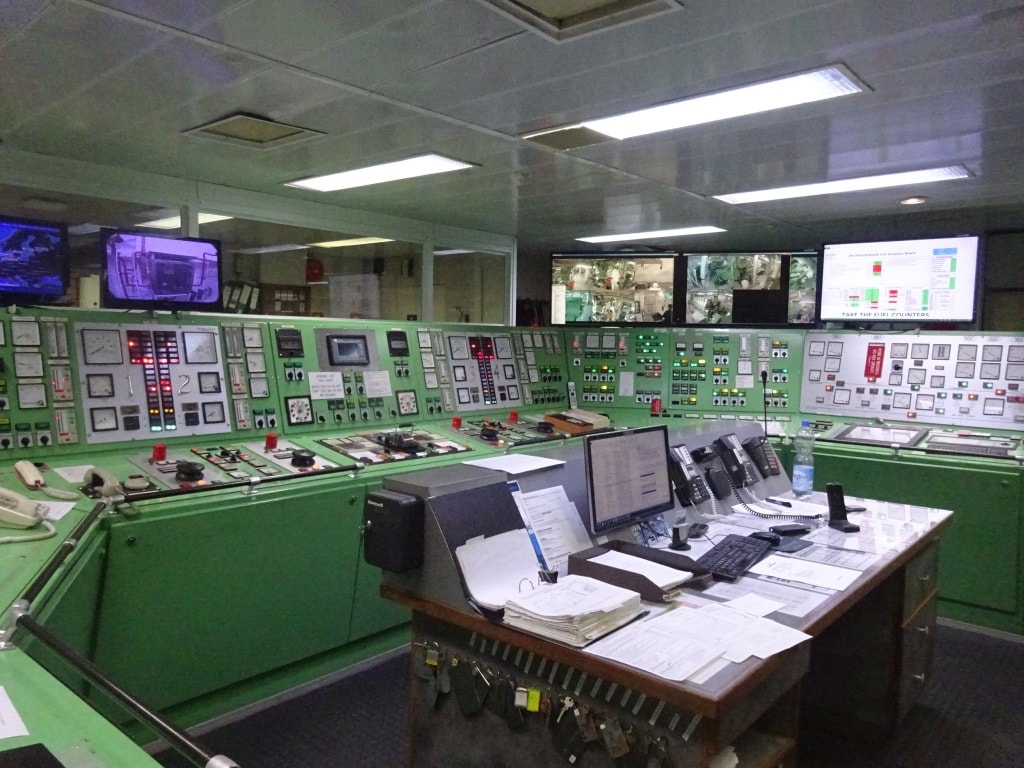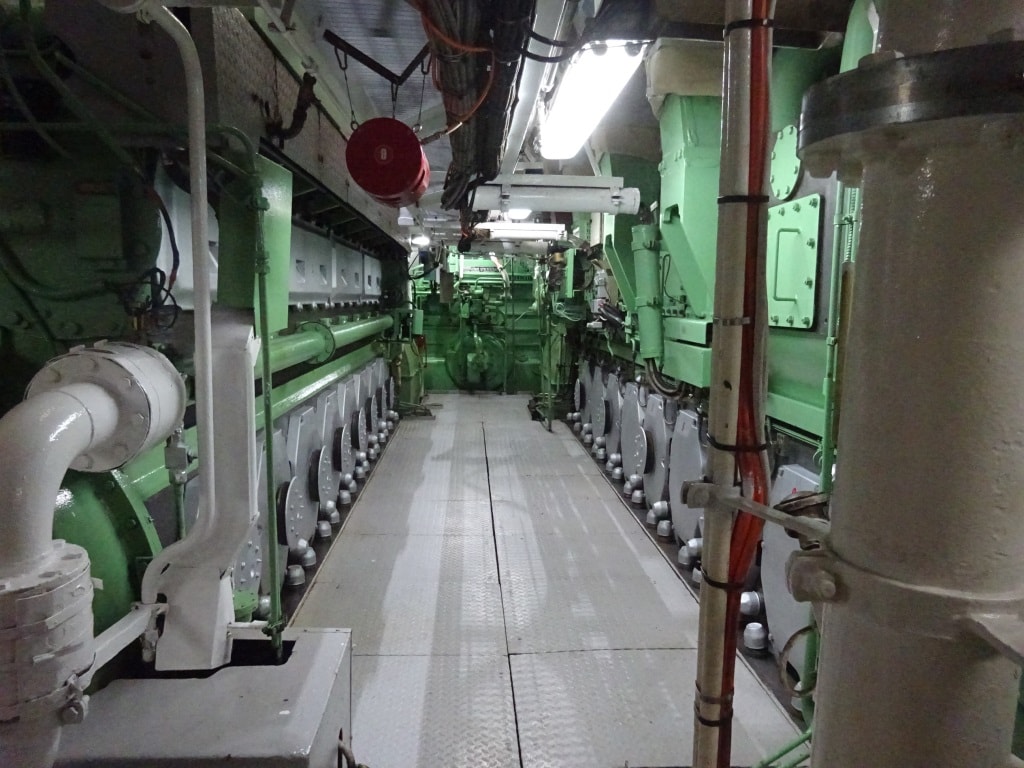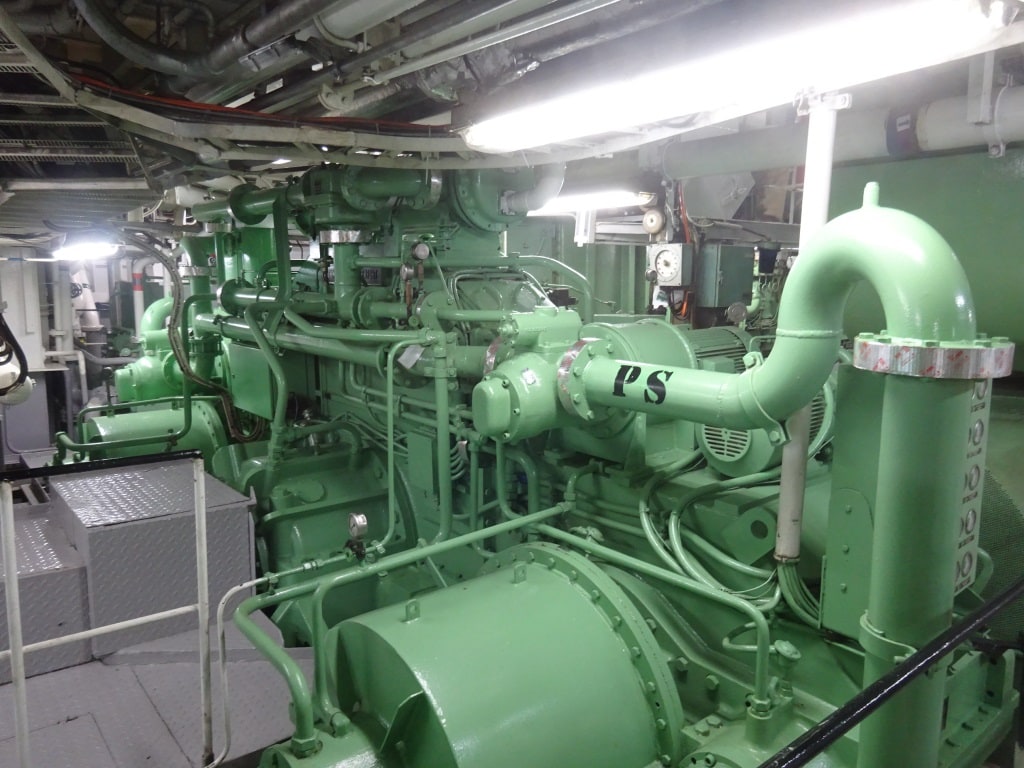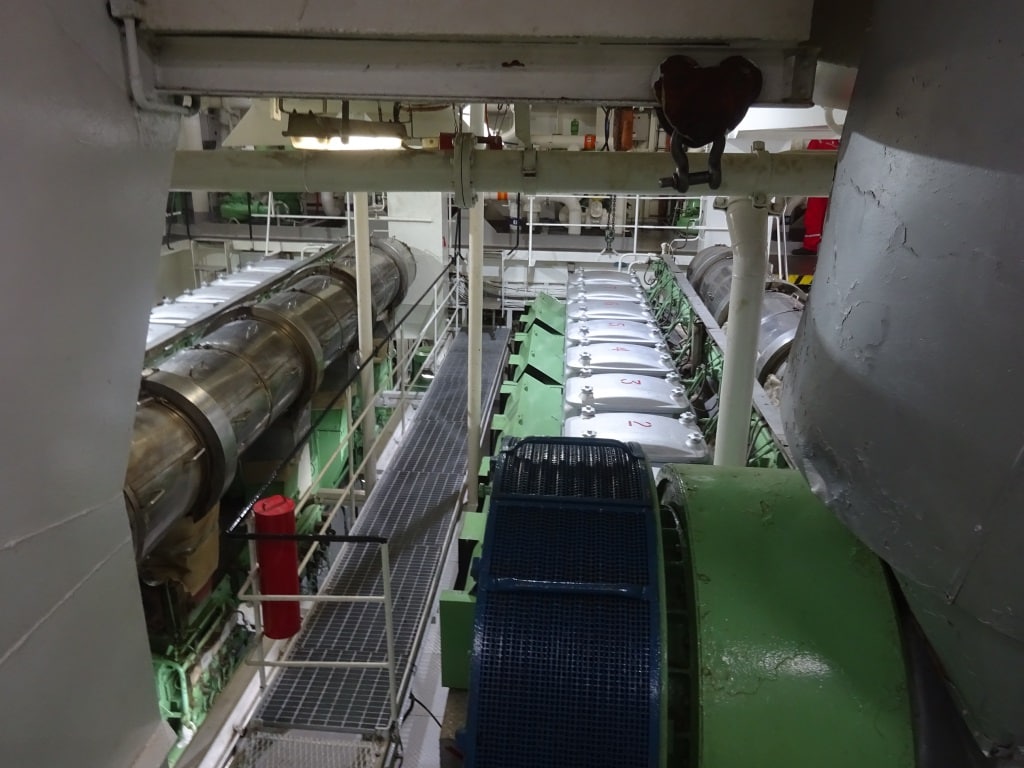Today is the last day of the cruise and we are retracing our steps down to Amsterdam. We left Copenhagen yesterday just after 17.00 hrs. and then sailed up between the Danish and Swedish Coast to the Kattegat, the section of North Sea Water which has a different name here. At 18.20 we pasted Hamlets Castle on our portside and that satisfied those who are into classical literature and plays. With cruises that have many port days, and the ms Prinsendam is very good at this, the last day is full of all the standard activities which are staple fare of a Holland America Cruise. Mariners Meeting, always a full house on the Prinsendam, followed by Mariners Lunch which generates an even fuller house as there are quite a few mariners who skip the party and go directly to the dining room for the lunch; or at least line up to be the first in. I hate standing in line but there seems to be people who love standing in line, and I have to admit it is a way of meeting people as nobody has anywhere to go.

The Engine Control Room of the ms Prinsendam. Dials, buttons and switches are all still original. what is new are all the screens and the mountains of paperwork needed to comply with, whatever there is to comply with. (And that is a lot nowadays)
Then in the afternoon there is the option to get rid of all the gained calories by joining On Deck for the Cause, walking 5 kilometers around the deck after having paid for the T shirt which helps the cause. The ship is in the wide open waters of the North Sea and although she moves at times it is not a bad ride at all. We are thundering down south with the –near- warp speed (at least for the Prinsendam) of almost 18 knots and we are overtaking slower ships all over the route.

Two of the four main engines, looking aft with the gear box setup right in the middle.
With all this routine stuff going on, it gives me the chance to blog a bit about our un-sung heroes, the engineers and their engine room. As the Prinsendam harkens back to another era, the engine room setup is also of a different philosophy than what is the norm today. Nowadays all the large cruise ships are diesel electric or better said engine electric as LNG is coming into vogue as well. Electro motors and the setup around it, is much more flexible and that is what the industry wants. Back in the 80’s the focus was on low cost and reliability and the electric engines did not have the same economics yet as the regular motor engines connected directly to a propeller shaft. Based on that principle there are a lot of variations possible. The N ships of Holland America in the 1980’s had direct drive. Propellers connected directly to very low speed engines. The advantage was, ultra-efficient in fuel consumption but prone to vibrate at higher speeds.

This is the portside gear box looking forward. the two round things are the end of the shafts of the engines and the round thing in the middle is the start of the port shaft which is connected to the portside propeller.
If you want to avoid vibration the best option is to go for medium speed or high speed engines. (They thump a lot less than low speed ones) On average the size and capacity of an engine gets less when the number of revolutions increase. Cars normally have higher rev engines than a big truck or lorry. Thus the designer has to balance the space available (normally there is no room to put 10 high speed engines next to each other or in line) and the amount of vibration that is acceptable while sailing. When the Royal Viking Sun was designed, they needed a cruise ship which could do 21 knots to maintain the average cruise schedules of those days and because it was a six star cruise company the guests should not notice the engines.

The top of the main engines, which run through three levels of the ER. The silver pipe is the exhaust pipe which leads to the Funnel but before the anything goes out, it first passes through the blue Turbo Blower in the fore ground which extracts more energy from the exhaust fumes. Then the fumes are still used to heat steam for the evaporator and that gives fresh water.
So they installed Four 8 cylinder ZAL40S Wartsila Sulzer diesel engines. The ship was built in Finland and thus buying local engines (built under license from the Sulzer company) made sort of sense. To reach a service speed of 20.5 knots, you need to have a bit of surplus and the top speed was measured at 21.8 knots. To get that speed a total of almost 29000 Horse Power is generated. To get the power to the propeller shaft, they connected two engines to each propeller shaft by means of a gear box. The gear box gave the option to disconnect from each shaft one engine if only lower speeds were required. The only thing the guests feel when the ship is sailing is when these engines are being clutched in or clutched out. That gives a sort of vibration during the moment that the gearwheel of the clutch mechanism synchronizes with the shaft. That will also be the case tomorrow morning when we start slowing down and enter the North Sea Canal on two engines.
Electricity at sea and in port is delivered by one or more auxiliary engines, we have three in total. With diesel electric propulsion you do not need those extra engines but the Prinsendam still has them. When we need the bow thrusters and the stern thruster then two engines have to be on line and when sailing like on the Amazon when the A.C goes to top capacity the 3rd one might be used as well.
I just did a structural locker inspection in the engine room and if I was not in the know, then I would not think the ship was 30 years old. A credit to its builders but also to the Holland America Engineers who have maintained the engines since 2002.
Tomorrow we are in Amsterdam. We will be in the locks around 03.00 hrs. and then docked at the passenger terminal behind Central Station by 07.00 hrs. The weather calls for an overcast day with temperatures in the mid-sixties or around 18 oC. Then our next cruise is up to Norway and the first few days do not look too good as Storm Hector has caused some turmoil in the upper North Sea.

June 15, 2018 at 5:03 pm
” To get the power to the propeller shaft, they connected two engines to each propeller shaft by means of a gear box. The gear box gave the option to disconnect from each shaft one engine if only lower speeds were required”
Is this what is called a father / son engine configuration?
June 16, 2018 at 2:45 am
Good morning from overcast Amsterdam.
Mother daughter or Father son arrangements normally indicate a larger and a smaller engine together on one shaft. In this case we have 4 of the same engines two by two on one shaft. so what they can do, is run one engines on two shafts. Two engines each on one shaft (portside and starboard propeller) or run one shaft with one or two engines clutched in. I have done it in the past when we needed only very low speeds, and staying in port was not an option to run one engine on one shaft. This can be done as the ships power comes from the auxillary engines.
Best regards
Capt. Albert
June 15, 2018 at 5:07 pm
Oh, my… the legendary vibration on the former Nieuw Amsterdam was the topic of many jokes by on board comedians.
June 15, 2018 at 5:44 pm
That engine room is as clean as the galley. Do they clean it with a tooth brush?
Sandra
June 15, 2018 at 8:56 pm
Thanks for the engine overview.
June 16, 2018 at 8:22 am
Thanks so much for the engine room info and pictures, I’ve sailed on Prinsendam several times and knew it wasn’t diesel/electric, but wondered about how the engines/shaft drive was configured. I always enjoy your commentary.